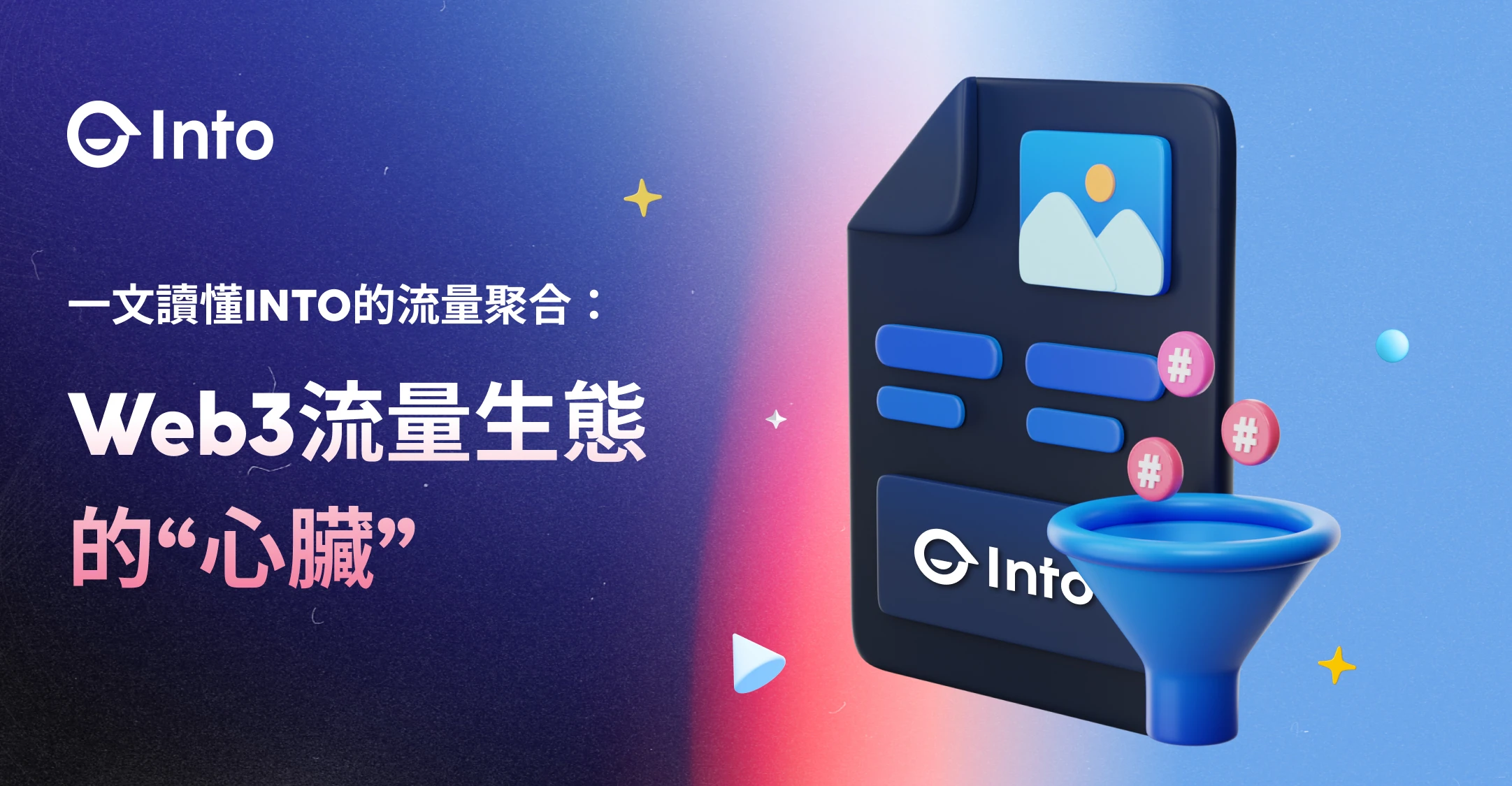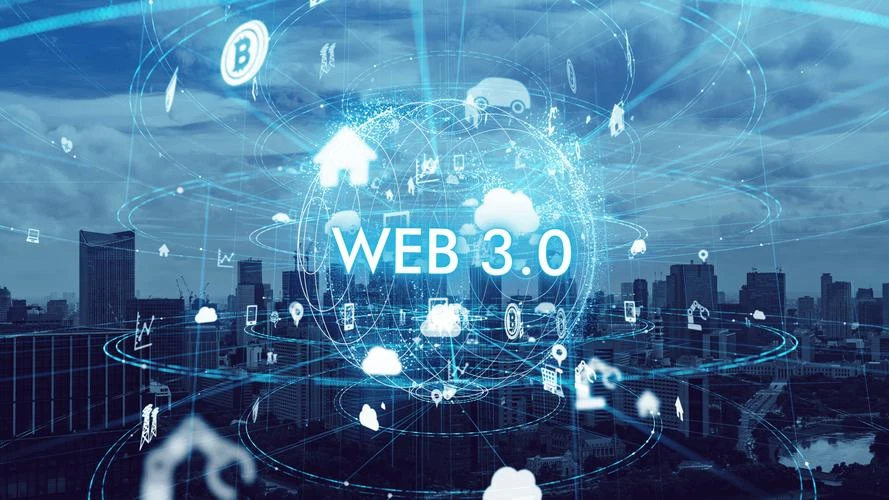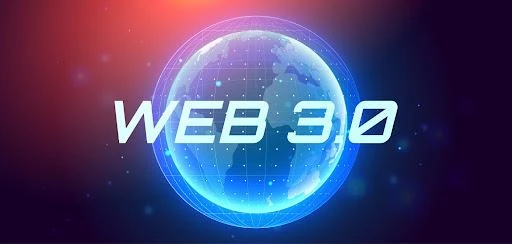In the new world of Web3, a revolution about user sovereignty is quietly taking place. In this revolution, as a pioneer in the Web3 social field, INTO is redefining the relationship between users and platforms through innovative technologies such as the SBT (Soul Bound Token) identity system and data storage based on smart contracts. It is not just building a social platform, but also creating a new era that respects user rights and returns to the essence of service.

1. User sovereignty is the core proposition of Web3?
In the world of Web3, user sovereignty is no longer an optional additional feature, but has become a key factor in the success of a project. There are profound technical, social and economic logic behind this.
First, from a technical perspective, the decentralized nature of Web3 provides a solid technical foundation for user sovereignty. Blockchain technology means that data no longer needs to be stored on a centralized server, but can be distributed throughout the network. This means that users can truly control their own data instead of handing it over to a centralized platform. At the same time, smart contract technology allows users to manage their own data and assets in a programmatic and automated manner without relying on the trust of a third party. These technological innovations provide unprecedented possibilities for realizing user sovereignty.
Secondly, from a social perspective, with the frequent occurrence of data leaks and the awakening of public privacy awareness, users demands for data sovereignty are becoming increasingly strong. People are beginning to realize that under the traditional Web2 model, they are actually exchanging personal data for free services, and these data are often used by platforms for targeted advertising, or even abused or leaked. This model not only infringes on users privacy rights, but may also have a substantial negative impact on users lives. Therefore, a new Internet model that respects user sovereignty has become an urgent need for society.
Finally, from an economic perspective, data has become a core asset in the digital economy era. However, in the traditional model, the value of data is mainly captured by centralized platforms, while the users who actually create the data cannot share this value. This unequal value distribution model is not only unfair, but also hinders the healthy development of the data economy. Only when users truly own and use their own data can data be used more fully and reasonably, thereby releasing greater economic value.

2. The perfect triangle of SBT, smart contracts and DAO
INTOs user sovereignty model is like a carefully designed triangle, consisting of three elements: the SBT (Soul Bound Token) identity system, smart contract data storage, and DAO (decentralized autonomous organization) governance. These three elements support and complement each other, and together build INTOs unique user sovereignty ecosystem.
First, lets take a look at the key role of the SBT identity system. In the world of INTO, SBT is like a magical digital badge that represents the users identity and achievements in the digital world. Unlike ordinary NFTs, SBT is non-transferable, which ensures the uniqueness and authenticity of the identity. Users can obtain multiple SBT labels that reflect their identity, skills, and contributions, and these SBTs together constitute the users digital resume. For example, a user may have multiple SBTs such as Excellent Content Creator, Active Community Contributor, and Senior Investor at the same time. This mechanism not only protects user privacy (because users can selectively display their SBTs), but also provides users with a credible, multi-dimensional digital identity. Imagine how cool it is that on INTOs platform, you can easily prove your professional ability or community contribution without disclosing sensitive personal information!
Second, INTO also uses smart contracts, a powerful tool, to achieve data notarization. Smart contracts are like an automatically executed digital notary that records the users data operations on the blockchain to ensure that these records cannot be tampered with and are traceable. On the INTO platform, all data generated by users will be recorded and managed through smart contracts. Users can check their data usage at any time, and can easily authorize or revoke the right to use their data. For example, if an advertiser wants to use your data, they must obtain your explicit authorization through a smart contract, and you can revoke this authorization at any time. This mechanism ensures that users have absolute control over their own data and truly achieves returning data ownership to users.
Third, INTO will also introduce the innovative element of DAO governance. DAO is like a decentralized parliament, where every community member can participate in the decision-making of the platform. In INTOs DAO, users can propose proposals on the development of the platform, and other users can vote on these proposals. For example, users can propose to add new features or adjust the platforms incentive mechanism. Once these proposals receive enough support, they will be automatically executed through smart contracts. This mechanism ensures that the development direction of the platform is always consistent with the interests of users, truly realizing user-led platform development.

Through the organic combination of these three elements, INTO has built a truly user-centric ecosystem. In this system, users not only have their own digital identity (SBT), control their own data (smart contracts), but can also participate in the governance of the platform (DAO). This is not only a technological innovation, but also an exploration of the future digital social form.
3. INTO: Technology and Mechanism
If INTO wants to successfully achieve its ambitious goal of user sovereignty, it needs to work on both the technical and mechanism levels, which constitutes the complete implementation path of INTO user sovereignty.
On the technical level, INTO is like an evolving digital organism, continuously optimizing and upgrading its user sovereignty-related technologies. First, INTO has invested a lot of resources in the research and development and optimization of SBT technology. In order to improve the availability and security of SBT, INTO has adopted the latest zero-knowledge proof technology, allowing users to prove that they own a certain SBT without disclosing specific information. Secondly, INTO is also constantly improving its smart contract system. By introducing advanced technologies such as formal verification, INTO ensures the security and reliability of smart contracts and maximizes the protection of users data rights. Finally, INTO is also actively exploring new privacy protection technologies, such as homomorphic encryption and secure multi-party computing, to cope with new privacy threats that may emerge in the future.
At the mechanism level, INTO is like a shrewd legislator, designing a complete system for protecting user rights. First, INTO has established a strict data access control mechanism. All access to user data requires multiple authorizations and leaves an unalterable operation record. Secondly, INTO has also introduced a data value distribution mechanism. When the users data is used to create value, the corresponding benefits will be automatically distributed to the user according to the smart contract. Finally, INTO has also established a user rights protection fund to reward white hat hackers who discover system vulnerabilities, as well as to support research and education related to user rights protection. These mechanisms together constitute INTOs user rights protection framework, ensuring that user sovereignty does not just remain at the slogan level, but is truly implemented in all aspects of platform operations.
Through a two-pronged approach of technology and mechanism, INTO is turning the concept of user sovereignty into reality. In this process, INTO is not only building a platform that respects user rights, but also cultivating a user-centric ecosystem and shaping a new digital culture.
In summary, INTOs user sovereignty practice shows us a new possibility in the Web3 world. It is not only a technological innovation, but also a revolution in thinking. In the world of INTO, users are no longer slaves to data, but the real rulers of the digital kingdom; platforms are no longer data plunderers, but guardians of user rights.
The significance of this model goes far beyond INTO itself. It provides a new approach to solving user rights issues in the digital age and points out a feasible path for building a more fair, free and democratic digital society.









